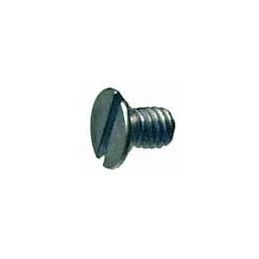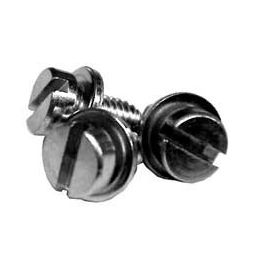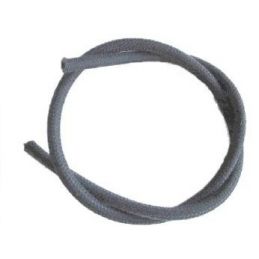Full Flow Oiling
What does that mean and how does it work? Most of you reading this know what this is, but do you really know how it works? You might already know all this but there might be something on this you didn’t know.
First of all, what does Full Flowing a case mean? Well what it refers to is drilling and tapping one of the oil galleys on the engine case for a return line. Then what is done is the outlet passage on the pump or the case is plugged. A special cover is then used on the oil pump that routes the oil out a fitting. So what is happening here is all the oil that comes to the pump from the sump is pushed through a hose that can go to a filter, it then can go to an external cooler and then back to the case. Make sense? Why is this better than just taking off the stock cooler and putting on an adapter that routes the oil to and from the case? I will explain why it's much better here, but I think we first have to look at how the stock oiling system works on these cases.
Please look close at the drawing and let's follow how it works stock. The oil gets sucked out of the sump, goes through the pump and then hits an oil galley right above the front pressure spring. If the oil is thick (cold) then the spring is depressed and the oil travels right to the main galley and feeds everything. If the oil is thinner (warm) then the piston stays up and the oil is now routed up to the oil cooler galley. After running through the cooler it routes back down and hits the main galley. Where again it feeds everything. This oil cooler galley is never shut off. What happens is it sees pressure from both ends and in effect dead heads. In other words; when the piston is down, pressure is hitting the in and the out of that galley, so the oil doesn’t go anywhere, just sits in the galley. When the piston is up then it in effect opens the return side of the oil cooler galley and allows oil to flow through it. Got it? Ok here is two more pictures with the oil piston up and with it down. Make sense now? That is how the stock system works. Now lets add the full flow system.
Let’s say we have a filter and an external cooler. We have drilled the oil galley right in front of the pressure piston. This is the return line. We have the outlet galley from the pump blocked off and are now routing the oil out the oil pump cover. Oil is sucked out of the sump and to the IN side of the oil filter adapter. Then from the outlet side of the oil filter to the external oil cooler. From the oil cooler back to the case. From there the case acts as if it was stock. Oil cold, the piston goes down and oil is fed to the main galley. Oil is warm, piston stays up and oil now goes through the stock oil cooler, and then hits the main galley. I am sure by now you get how it all flows.
Now why is this better than just getting rid of the stock cooler and adding an adapter on top the routes oil in and out? Here is my answer. That galley only works when the oil is warm. Where are all the impurities in your motor in the morning? On the bottom, right? Where is your pick up tube for the oil pump? On the bottom right? So now we take that and shove it into the main galley. You are not filtering oil until the oil is warm because your oil cooler galley doesn’t work until the motor is warm. Now with full flowing, 100% of your oil comes out of the pump and goes through your filter before it even hits the pressure spring. Got it? So 100% of your oil is going through a filter. NICE. Here is another reason it's better. I live in Redding CA. Those of you who have been here in the summer know that it is damn hot. Over 100 degrees is not uncommon here every summer day and we have zero humidity. Here is what is happening on this setup when you drive in this hot weather. When I am driving down the road at 3800 rpms my external cooler is working as air is going through the cooler. My internal cooler is working because the oil is hot. So both coolers are working. When I am sitting in traffic the external is seeing oil but there is no air blowing through it, so its not working as well as it could. My internal is working because the fan is blowing air through it. Keep in mind the engine is at idle so its not working hard at all and the stock cooler is enough. This system works well for me here in Redding. Keep in mind here I do not mount the external oil cooler or filter in the engine compartment.
Ok this all sounds great, how can I do this to my motor? Well if your motor is together that’s bad news because the oil galley has to be drilled and tapped for the fitting. If you do it with the motor together there is a good chance you're going to get metal shaving in the main oil galley. They are going to get shoved right into the main bearing the minute you start it. So I wouldn’t do it. If you have your motor apart but can't afford the external parts that is ok too. You can just put a plug in the hole that was drilled and tapped. Leave the pump alone and run it until you can afford the rest. Then you can always pull the oil pump plug it, add your full flow cover, then remove the return line plug and put the fitting in. Beats the hell out of tearing the motor apart again.
Here are some mistakes I have seen. The case is drilled and tapped. The cover is put on with the fitting. The hoses are hooked up to the cooler and filter. What they forgot is to plug the outlet passage of the pump. The external hoses and set up was fighting the internal galleys and the motor starved for oil and the motor seized up. Another one is a shop built the motor and put caps on the oil pump and return fitting. Why? Because the plumbing is on the car not the motor. Customer put the motor in and did not hook up the lines. He started the motor and the oil pump hydraliced and guess what no oil pressure. Even if the pump didn’t hydralic all the oil comes out of the cover. The cover was capped. Hello! No oil is going back to the motor, yeah it seized. One of the most common mistakes is a cheap tin oil filter. The oil pressure from the pump is high. It is not uncommon to blow up a cheap filter. I only use System One style filters that can handle the pressure.
If you’re in an area that sees any sort of heat, or just want to make sure 100% of your oil is being filtered, full flowing your case is the way to go.This industry has been doing it for years and there is a reason why; It flippen works and works well!







